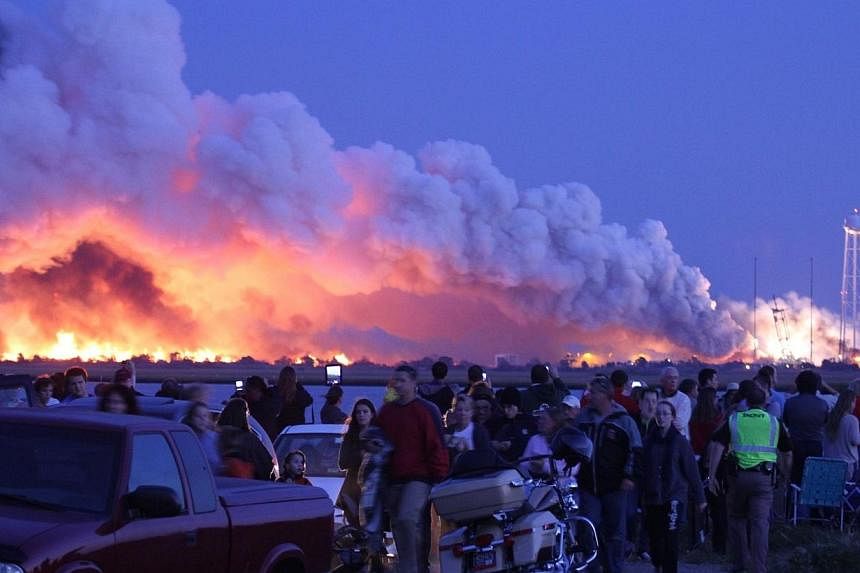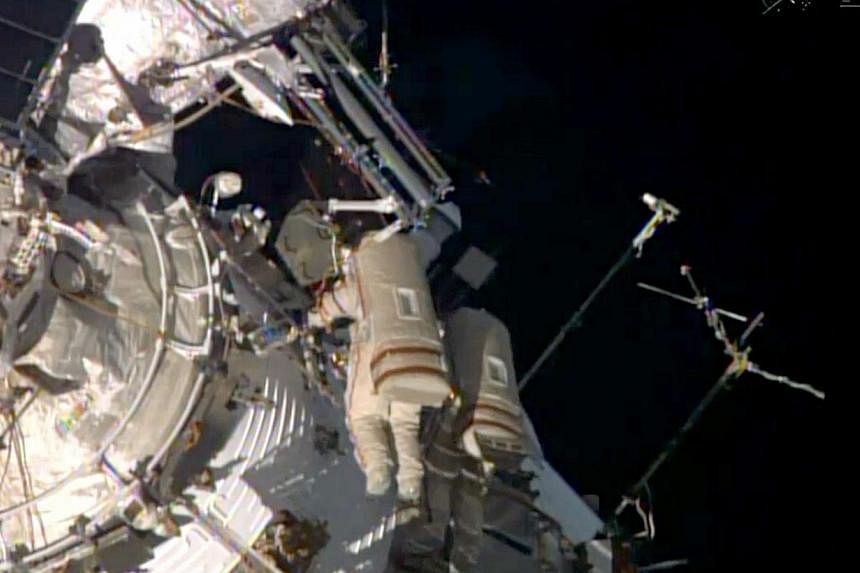The Antares rocket bound for the International Space Station (ISS) exploded just seconds after taking off from its launch pad on Wednesday morning (Singapore time).
Along with the United States's National Aeronautics and Space Administration (Nasa) spacecraft, 2,300kg of supplies and science equipment were also destroyed.
Here are five things to know about the ISS.
1. What is it?
The ISS is a habitable satellite in Earth's orbit.
Five space agencies representing 15 countries started building it in 1998, with the purpose of observing Earth, studying space and serving as a construction site and refuelling stop for spacecraft.
The agencies, which also operate the station, are the United States' Nasa, Russia's Federal Space Agency (Roscosmos), the Europrean Space Agency, the Canadian Space Agency and the Japan Aerospace Exploration Agency.
While the station was previously projected to be shut down in 2020, Nasa and White House officials in January announced plans to keep it running till at least 2024.
2. How was it built?
Building the station cost US$100 billion (S$127 billion) and required more than 115 spaceflights.
It orbits Earth at an average altitude of 400km, and completes one orbit in 90 minutes, covering 28,000km in one hour.
The relatively low altitude requires occasional rocket firings to raise the station's orbit and prevent it from falling to Earth.
The first module, Zarya (Russian for dawn), was launched on Nov 20, 1998, and was the pioneer building block of the station. It is now used primarily for storage and propulsion.
3. What can be found there?
At the centre of the station is a cluster of 14 pressurised modules that can be inhabited by humans. It is divided into a Russian segment and a US segment.
Some modules include Kibo (Japanese for hope), the largest module and laboratory with two experiment sections and 23 equipment racks, as well as Zvezda (Russian for star), which has a toilet and sleep compartments.
Attached to the module cluster is a lengthy main truss, which supports giant solar panels, heat radiators and other exterior equipment.
The station is the largest structure ever built in space, and can be seen from Earth with the naked eye as a bright white dot.
With a wingspan of about 110m (the length of a football field), it has an estimated mass of 419,600kg - the equivalent of more than 330 cars.
It has a habitable volume of 935 cubic metres, which is about 1.5 times the volume of a Boeing 747 airplane.
All this makes it four times as large as the Russian space station Mir, and five times larger than the US Skylab.
4. Who and what goes there?
Astronauts and cosmonauts from Japan, Russia and the US have occupied the satellite laboratory since 2000, bringing research equipment and maintenance supplies with them.
Together they have spent more than 1,000 hours on spacewalks outside the station to assemble and maintain it.
Private American companies SpaceX and Orbital Sciences Corp., who have contracts with Nasa, have also flown robotic cargo missions to the station.
Transported by Soyuz spacecraft, up to six crew members can now live in the five-bedroom space for an average stint of four to six months.
If the crew needs to evacuate the station, they can return to Earth aboard two Russian Soyuz craft docked there.
In 2001, American multi-millionaire entrepreneur Dennis Tito became the first person to fly to the station as a self-funded space tourist. He reportedly forked out $20 million for the visit and stayed on board the ISS for eight days.
Olympic torches have also been on board the station. In November last year, Russian cosmonauts Oleg Kotov and Sergei Ryazansky took the 2014 Sochi Winter Olympics torch on a spacewalk.
5. How does it operate?
Crew members at the space station are assisted by mission control centres in Houston and Moscow, as well as a payload control centre in Huntsville, Alabama. Other mission centres in Japan, Canada and Europe also support the ISS.
The station is powered by the modules and its solar panels, which can deliver up to 90 kilowatts. Almost 13 km of wire connects the electrical power system on board.
A whopping 3.3 million lines of software code supports the station's operations. In the US segment alone, 1.5 million lines of flight code run on 44 computers and 100 data networks, which in turn transmit 400,000 signals such as pressure and temperature measurements.
Source: Space.com



